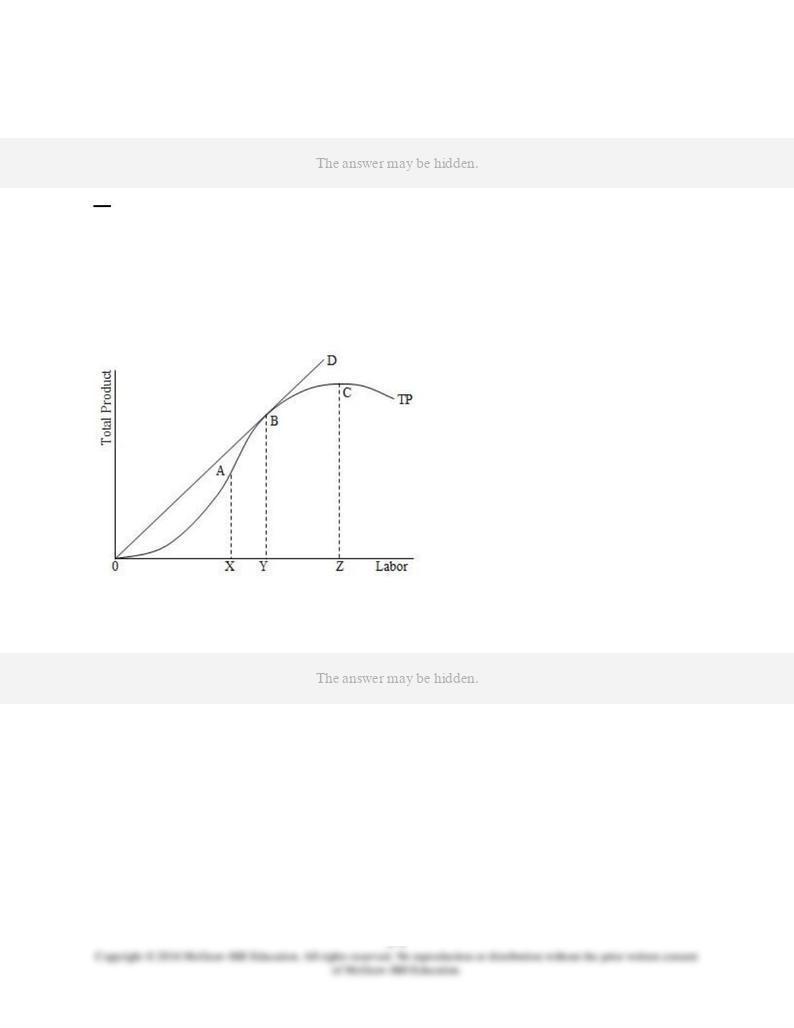
5-1
Chapter 05 Test Bank KEY
D. at least one resource is fixed. AACSB: Reflective Thinking
Accessibility: Keyboard Navigation
Blooms: Remember
Difficulty: 1 Easy
Learning Objective: 05-02 Explain how a firm’s short-run production function can be used to derive a demand curve for labor.
Topic: A Firm's Short-Run Production Function
2. Refer to the graph below.
The "zone of production" consists of labor inputs over the range of
D. XZ. AACSB: Reflective Thinking
Blooms: Understand
Difficulty: 2 Medium
Learning Objective: 05-02 Explain how a firm’s short-run production function can be used to derive a demand curve for labor.
Topic: A Firm's Short-Run Production Function
3. Refer to the graph below.
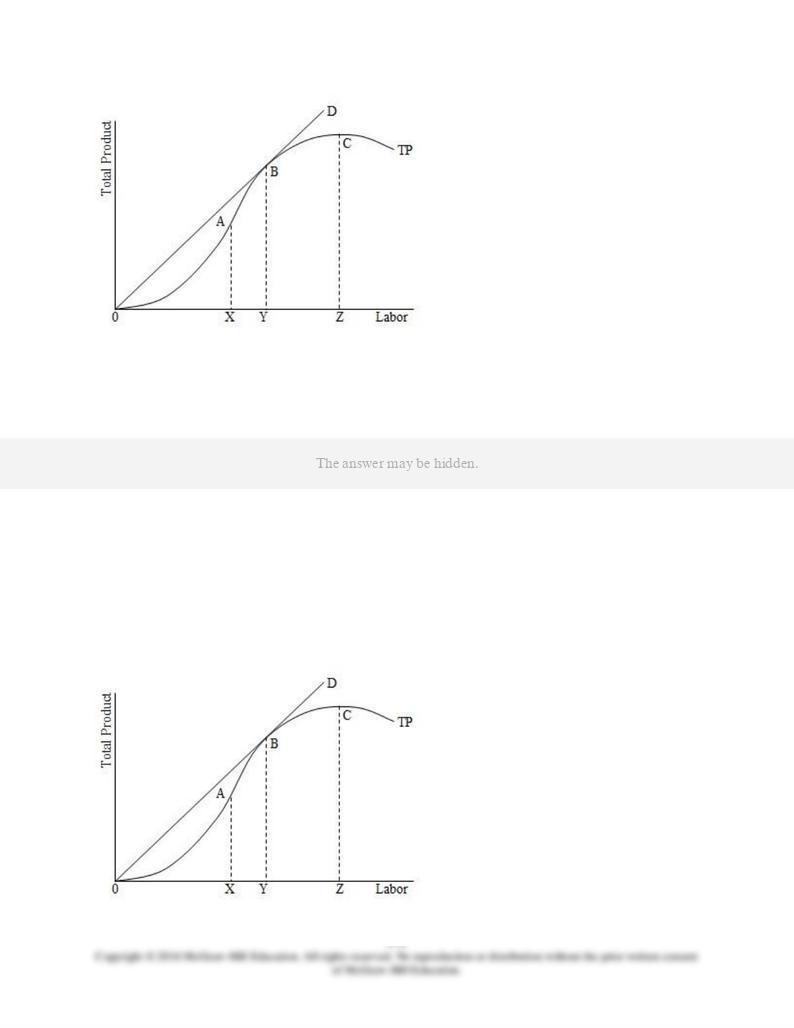
5-2
The slope of line segment 0D can be interpreted as the
D. greatest possible marginal product of labor. AACSB: Reflective Thinking
Blooms: Understand
Difficulty: 2 Medium
Learning Objective: 05-02 Explain how a firm’s short-run production function can be used to derive a demand curve for labor.
Topic: A Firm's Short-Run Production Function
4. Refer to the graph below.
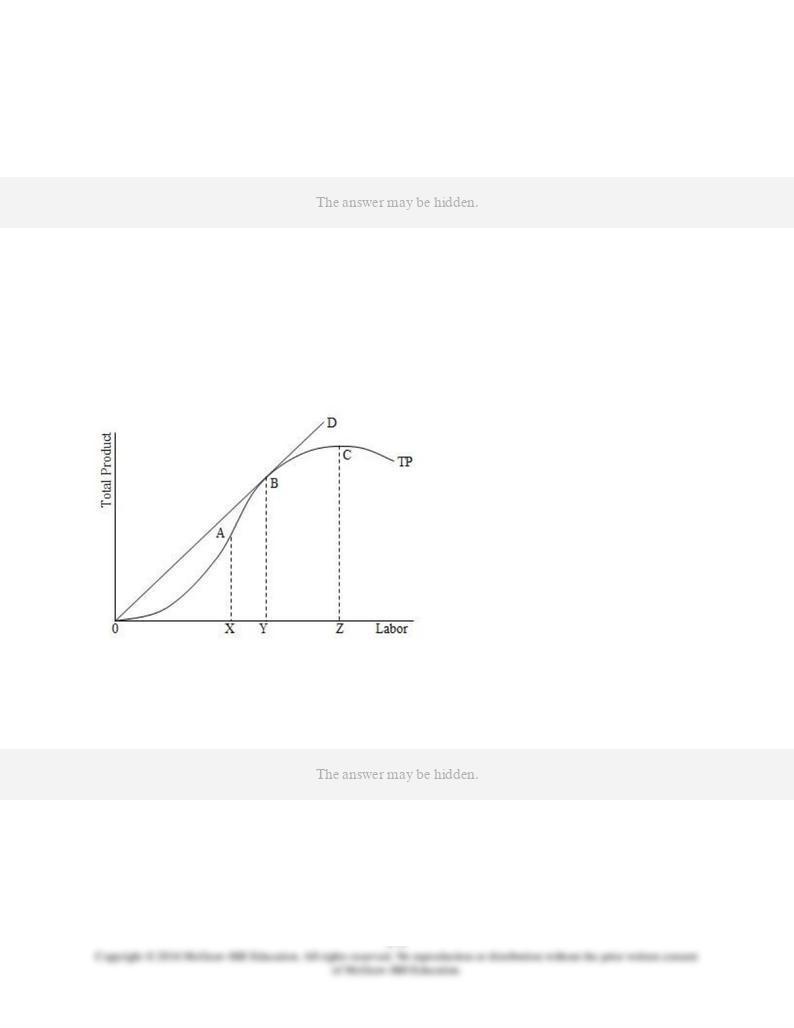
5-3
The slope of line segment 0D can be interpreted as the
D. the greatest possible total product of labor. AACSB: Reflective Thinking
Blooms: Understand
Difficulty: 2 Medium
Learning Objective: 05-02 Explain how a firm’s short-run production function can be used to derive a demand curve for labor.
Topic: A Firm's Short-Run Production Function
5. Refer to the graph below.
For labor input levels between X and Y,
D. both the marginal product and the average product of labor are rising. AACSB: Reflective Thinking
Blooms: Understand
Difficulty: 2 Medium
Learning Objective: 05-02 Explain how a firm’s short-run production function can be used to derive a demand curve for labor.
Topic: A Firm's Short-Run Production Function
6. Refer to the graph below.
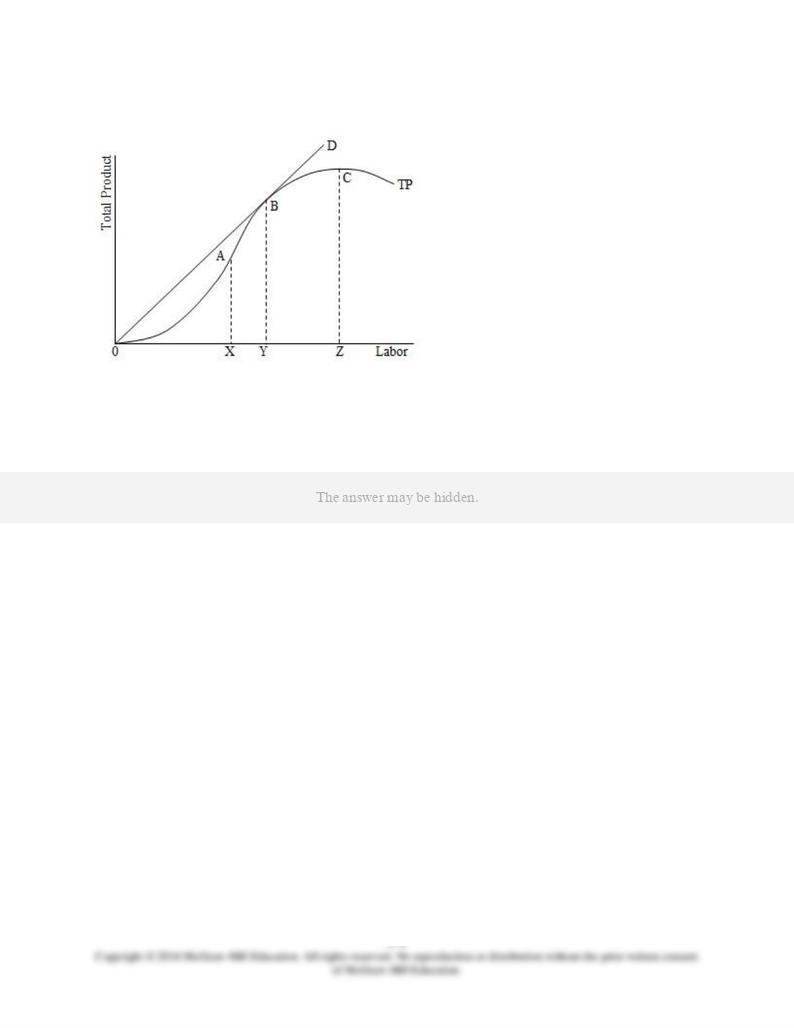
5-4
The "law of diminishing marginal returns" begins to take effect at labor input level
D. Z. AACSB: Reflective Thinking
Blooms: Understand
Difficulty: 2 Medium
Learning Objective: 05-02 Explain how a firm’s short-run production function can be used to derive a demand curve for labor.
Topic: A Firm's Short-Run Production Function
7. Refer to the graph below.

5-5
At labor input Z, labor’s
D. total product is zero. AACSB: Reflective Thinking
Blooms: Understand
Difficulty: 2 Medium
Learning Objective: 05-02 Explain how a firm’s short-run production function can be used to derive a demand curve for labor.
Topic: A Firm's Short-Run Production Function
D. decrease the average productivity of both capital and labor. AACSB: Reflective Thinking
Accessibility: Keyboard Navigation
Blooms: Remember
Difficulty: 1 Easy
Learning Objective: 05-02 Explain how a firm’s short-run production function can be used to derive a demand curve for labor.
Topic: A Firm's Short-Run Production Function
D. III only. AACSB: Reflective Thinking
Accessibility: Keyboard Navigation
Blooms: Remember
Difficulty: 1 Easy
Learning Objective: 05-02 Explain how a firm’s short-run production function can be used to derive a demand curve for labor.
Topic: A Firm's Short-Run Production Function
10. Which of the following best describes the "law of diminishing marginal returns"?
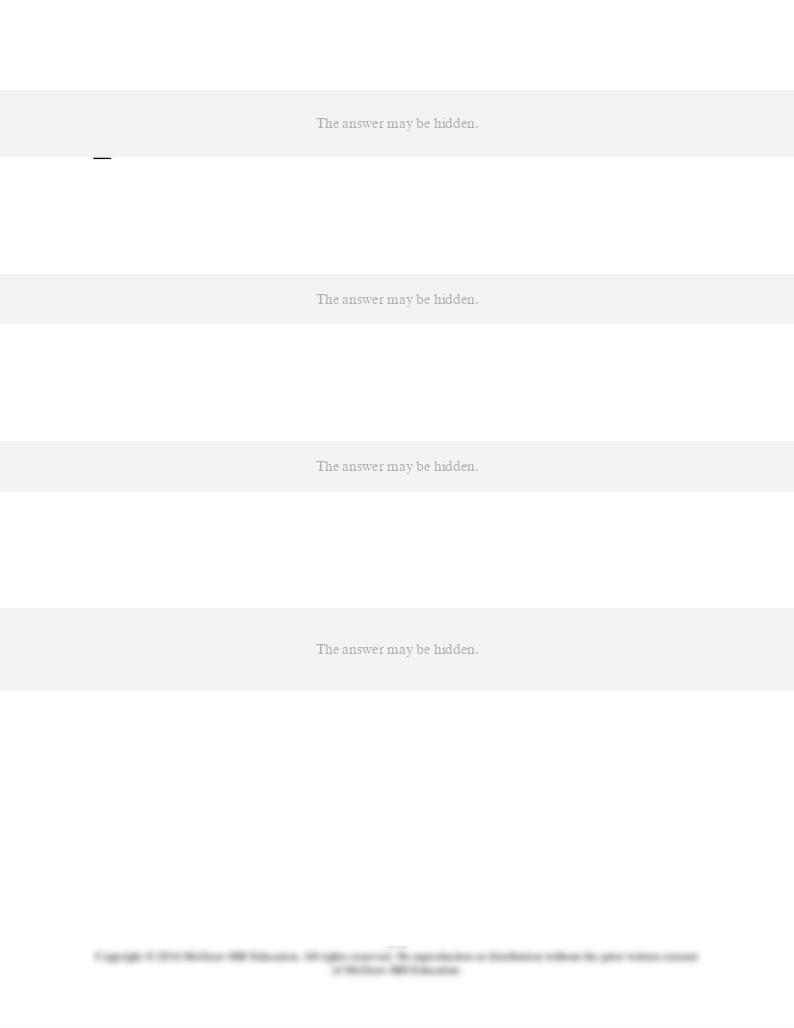
5-6
AACSB: Reflective Thinking
Accessibility: Keyboard Navigation
Blooms: Remember
Difficulty: 1 Easy
Learning Objective: 05-02 Explain how a firm’s short-run production function can be used to derive a demand curve for labor.
Topic: A Firm's Short-Run Production Function
11. Which of the following equalities holds when the profit-maximizing quantity of labor is employed in
D. MRP = 0 AACSB: Reflective Thinking
Accessibility: Keyboard Navigation
Blooms: Remember
Difficulty: 1 Easy
Learning Objective: 05-02 Explain how a firm’s short-run production function can be used to derive a demand curve for labor.
Topic: Short-Run Demand for Labor: The Perfectly Competitive Seller
D. stage II of the total product curve. AACSB: Reflective Thinking
Accessibility: Keyboard Navigation
Blooms: Remember
Difficulty: 1 Easy
Learning Objective: 05-02 Explain how a firm’s short-run production function can be used to derive a demand curve for labor.
Topic: Short-Run Demand for Labor: The Perfectly Competitive Seller
D. VMP always exceeds MRP. AACSB: Reflective Thinking
Accessibility: Keyboard Navigation
Blooms: Remember
Difficulty: 1 Easy
Learning Objective: 05-02 Explain how a firm’s short-run production function can be used to derive a demand curve for labor.
Topic: Short-Run Demand for Labor: The Perfectly Competitive Seller
14. Refer to the following table.
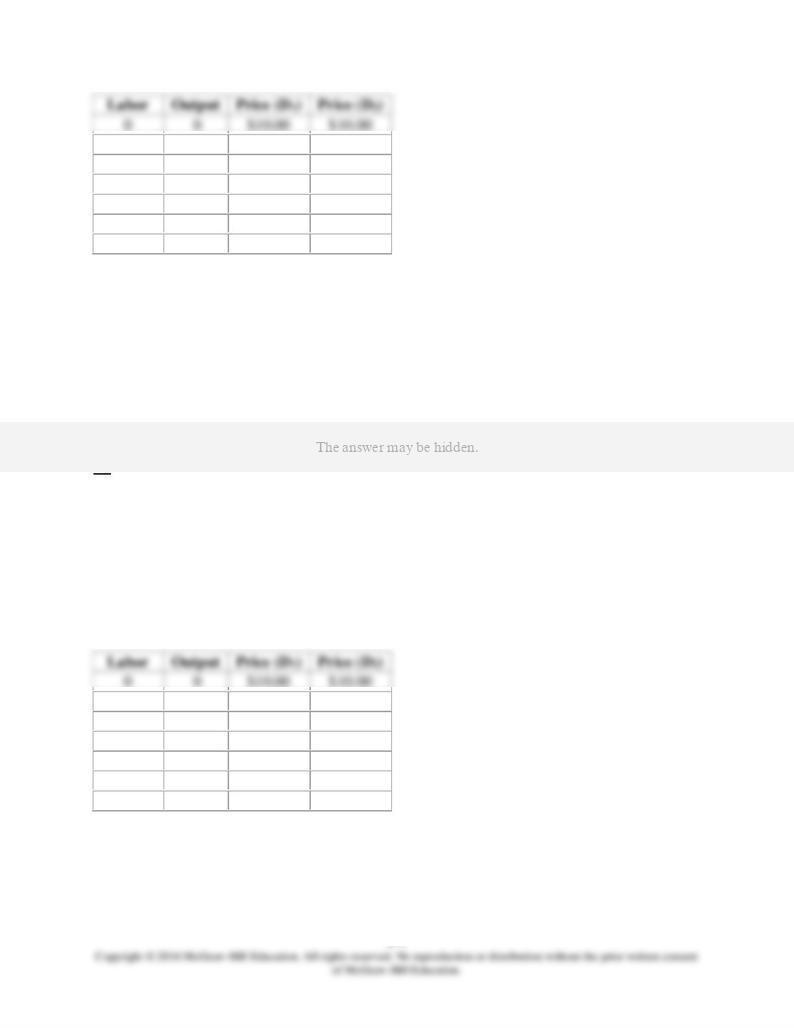
5-7
1
16
10.00
9.50
2
31
10.00
9.00
3
45
10.00
8.50
4
58
10.00
7.50
5
69
10.00
6.50
6
78
10.00
5.50
Assume that the labor market is perfectly competitive. Suppose the firm’s product demand is given by the
column labeled D1. If the wage rate is $100, the firm will achieve maximum profit by hiring _____
workers.
D. 6 AACSB: Analytic
Blooms: Apply
Difficulty: 3 Hard
Learning Objective: 05-02 Explain how a firm’s short-run production function can be used to derive a demand curve for labor.
Topic: Short-Run Demand for Labor: The Perfectly Competitive Seller
15. Refer to the following table.
1
16
10.00
9.50
2
31
10.00
9.00
3
45
10.00
8.50
4
58
10.00
7.50
5
69
10.00
6.50
6
78
10.00
5.50
Assume that the labor market is perfectly competitive. Suppose the firm’s product demand is given by the
column labeled D1. If the wage rate rises from $100 to $135, the firm will reduce the quantity of labor
employed by _____ unit(s).
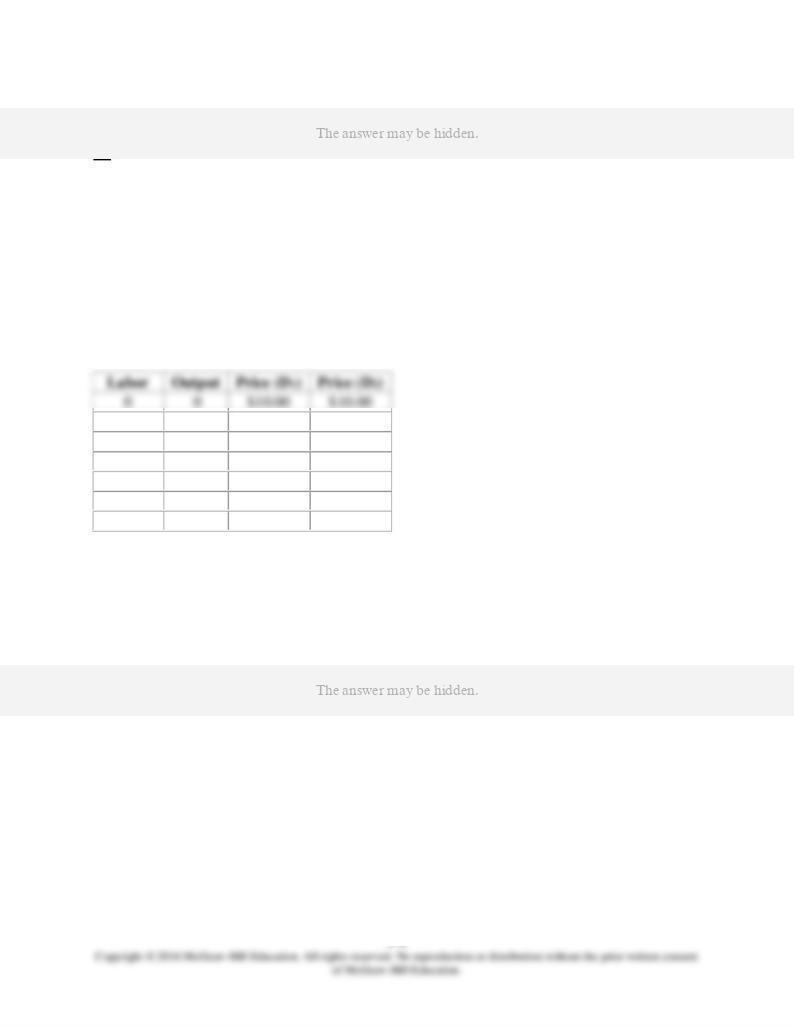
5-8
D. 3 AACSB: Analytic
Blooms: Apply
Difficulty: 3 Hard
Learning Objective: 05-02 Explain how a firm’s short-run production function can be used to derive a demand curve for labor.
Topic: Short-Run Demand for Labor: The Perfectly Competitive Seller
16. Refer to the following table.
1
16
10.00
9.50
2
31
10.00
9.00
3
45
10.00
8.50
4
58
10.00
7.50
5
69
10.00
6.50
6
78
10.00
5.50
Assume that the labor market is perfectly competitive. Suppose the firm’s product demand is given by the
column labeled D1. If the wage rate is $125, the firm will achieve maximum profit by hiring _____
workers.
D. 6 AACSB: Analytic
Blooms: Apply
Difficulty: 3 Hard
Learning Objective: 05-02 Explain how a firm’s short-run production function can be used to derive a demand curve for labor.
Topic: Short-Run Demand for Labor: The Perfectly Competitive Seller
17. Refer to the following table.
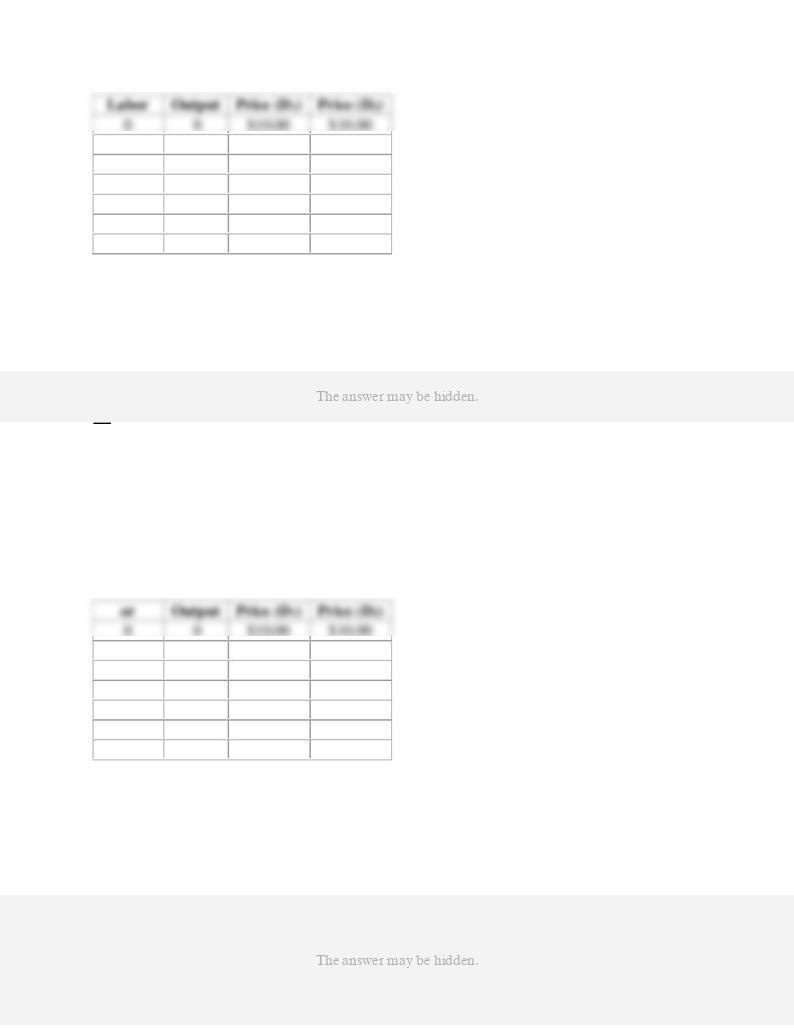
1
16
10.00
9.50
2
31
10.00
9.00
3
45
10.00
8.50
4
58
10.00
7.50
5
69
10.00
6.50
6
78
10.00
5.50
Assume that the labor market is perfectly competitive. Suppose the firm’s product demand is given by the
column labeled D1. The value of the marginal product of the fourth worker is
D. $580. AACSB: Analytic
Blooms: Apply
Difficulty: 3 Hard
Learning Objective: 05-02 Explain how a firm’s short-run production function can be used to derive a demand curve for labor.
Topic: Short-Run Demand for Labor: The Perfectly Competitive Seller
18. Refer to the following table.
1
16
10.00
9.50
2
31
10.00
9.00
3
45
10.00
8.50
4
58
10.00
7.50
5
69
10.00
6.50
6
78
10.00
5.50
Assume that the labor market is perfectly competitive. Suppose the firm’s product demand is given by the
column labeled D2. If the wage rate is $100, the firm will achieve maximum profit by hiring _____
workers.

5-10
C. 4
D. 5 AACSB: Analytic
Blooms: Apply
Difficulty: 3 Hard
Learning Objective: 05-03 Contrast the labor demand curves of firms that operate in perfectly competitive versus imperfectly competitive output
markets.
Topic: Short-Run Demand for Labor: The Perfectly Competitive Seller
19. Refer to the following table.
1
16
10.00
9.50
2
31
10.00
9.00
3
45
10.00
8.50
4
58
10.00
7.50
5
69
10.00
6.50
6
78
10.00
5.50
Assume that the labor market is perfectly competitive. Suppose the firm’s product demand is given by the
column labeled D2. The extra revenue generated by the second worker is
D. $435. AACSB: Analytic
Blooms: Apply
Difficulty: 3 Hard
Learning Objective: 05-03 Contrast the labor demand curves of firms that operate in perfectly competitive versus imperfectly competitive output
markets.
Topic: Short-Run Demand for Labor: The Perfectly Competitive Seller
20. Refer to the following table.
1
16
10.00
9.50
2
31
10.00
9.00
3
45
10.00
8.50
4
58
10.00
7.50
5
69
10.00
6.50
6
78
10.00
5.50
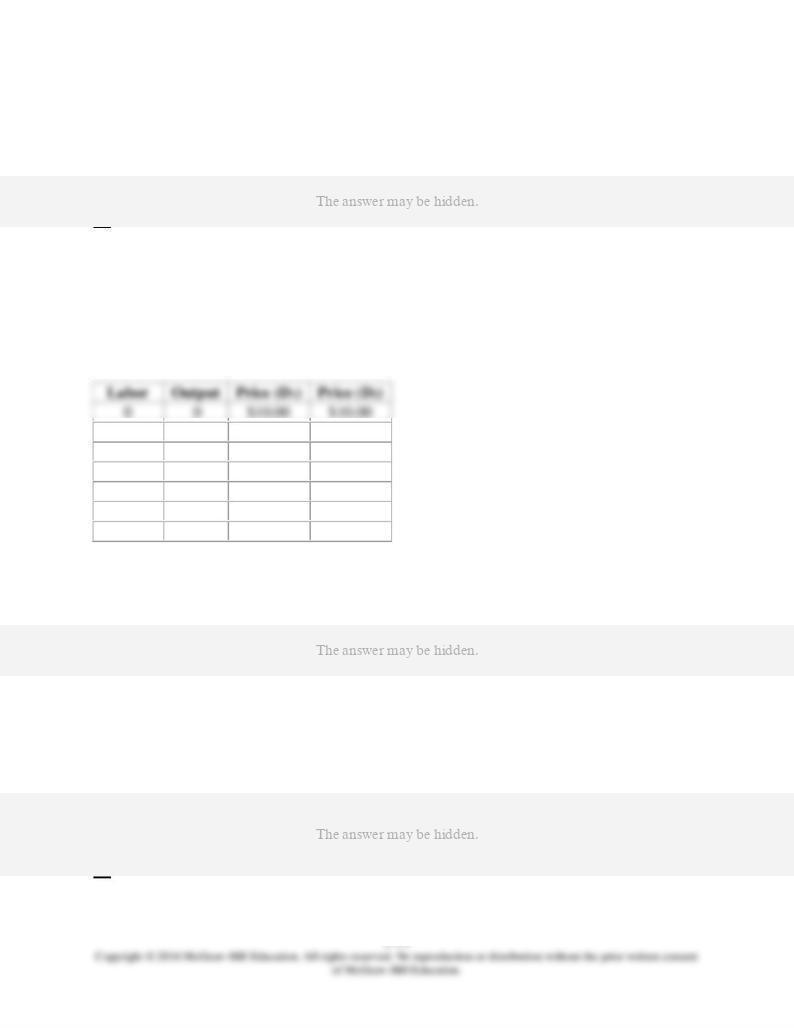
5-11
Assume that the labor market is perfectly competitive. Suppose the firm’s product demand is given by the
column labeled D2. If the wage rate rises from $100 to $130, the firm will reduce the quantity of labor
employed by _____ unit(s).
D. 3 AACSB: Analytic
Blooms: Apply
Difficulty: 3 Hard
Learning Objective: 05-03 Contrast the labor demand curves of firms that operate in perfectly competitive versus imperfectly competitive output
markets.
Topic: Short-Run Demand for Labor: The Perfectly Competitive Seller
21. Refer to the following table.
1
16
10.00
9.50
2
31
10.00
9.00
3
45
10.00
8.50
4
58
10.00
7.50
5
69
10.00
6.50
6
78
10.00
5.50
Assume that the labor market is perfectly competitive. Compared to a firm facing D1, a firm facing
demand schedule D2 but paying the same wage will hire
D. More information is required. AACSB: Analytic
Blooms: Apply
Difficulty: 3 Hard
Learning Objective: 05-03 Contrast the labor demand curves of firms that operate in perfectly competitive versus imperfectly competitive output
markets.
Topic: Short-Run Demand for Labor: The Perfectly Competitive Seller
AACSB: Reflective Thinking
Accessibility: Keyboard Navigation
Blooms: Remember
Difficulty: 1 Easy

5-12
Learning Objective: 05-03 Contrast the labor demand curves of firms that operate in perfectly competitive versus imperfectly competitive output
markets.
Topic: Short-Run Demand for Labor: The Perfectly Competitive Seller
23. Refer to the following table.
1
16
2.00
2
31
1.80
3
45
1.60
4
58
1.40
5
69
1.20
6
78
1.00
Assume that the labor market is perfectly competitive. If the wage is $18.00, how many workers will this
profit-maximizing firm choose to employ?
D. 5 AACSB: Analytic
Blooms: Apply
Difficulty: 3 Hard
Learning Objective: 05-03 Contrast the labor demand curves of firms that operate in perfectly competitive versus imperfectly competitive output
markets.
Topic: Short-Run Demand for Labor: The Perfectly Competitive Seller
24. Refer to the following table.
1
16
2.00
2
31
1.80
3
45
1.60
4
58
1.40
5
69
1.20
6
78
1.00
Assume that the labor market is perfectly competitive. What are the values of marginal product and the
marginal revenue product, respectively, for the third worker?

5-13
D. $81.00; $62.00 AACSB: Analytic
Blooms: Apply
Difficulty: 3 Hard
Learning Objective: 05-03 Contrast the labor demand curves of firms that operate in perfectly competitive versus imperfectly competitive output
markets.
Topic: Short-Run Demand for Labor: The Perfectly Competitive Seller
25. Refer to the following table.
1
16
2.00
2
31
1.80
3
45
1.60
4
58
1.40
5
69
1.20
6
78
1.00
Assume that the labor market is perfectly competitive. If the wage is $11.00, how many workers will this
profit-maximizing firm choose to employ?
D. 5 AACSB: Analytic
Blooms: Apply
Difficulty: 3 Hard
Learning Objective: 05-03 Contrast the labor demand curves of firms that operate in perfectly competitive versus imperfectly competitive output
markets.
Topic: Short-Run Demand for Labor: The Perfectly Competitive Seller
26. Refer to the following table.
1
16
2.00
2
31
1.80
3
45
1.60
4
58
1.40
5
69
1.20
6
78
1.00

5-14
Assume that the labor market is perfectly competitive. Rather than the product demand schedule shown in
the table, suppose this firm sold its output competitively for a price of $2.50. In this case, how many
workers will this profit-maximizing firm choose to employ at a wage of $25.00?
D. 5 AACSB: Analytic
Blooms: Apply
Difficulty: 3 Hard
Learning Objective: 05-03 Contrast the labor demand curves of firms that operate in perfectly competitive versus imperfectly competitive output
markets.
Topic: Short-Run Demand for Labor: The Perfectly Competitive Seller
27. "The extra output, measured in dollars, that accrues to society when an additional unit of labor is
D. total revenue product. AACSB: Reflective Thinking
Accessibility: Keyboard Navigation
Blooms: Remember
Difficulty: 1 Easy
Learning Objective: 05-03 Contrast the labor demand curves of firms that operate in perfectly competitive versus imperfectly competitive output
markets.
Topic: Short-Run Demand for Labor: The Perfectly Competitive Seller
D. be perfectly elastic if the firm is hiring labor competitively. AACSB: Reflective Thinking
Accessibility: Keyboard Navigation
Blooms: Remember
Difficulty: 1 Easy
Learning Objective: 05-03 Contrast the labor demand curves of firms that operate in perfectly competitive versus imperfectly competitive output
markets.
Topic: Short-Run Demand for Labor: The Imperfectly Competitive Seller
D. the same as that of a perfectly competitive seller. AACSB: Reflective Thinking
Accessibility: Keyboard Navigation
Blooms: Remember
Difficulty: 1 Easy
Learning Objective: 05-03 Contrast the labor demand curves of firms that operate in perfectly competitive versus imperfectly competitive output
markets.

Topic: Short-Run Demand for Labor: The Imperfectly Competitive Seller
D. more workers, because monopolies have higher profits and can pay higher wages. AACSB: Reflective Thinking
Accessibility: Keyboard Navigation
Blooms: Remember
Difficulty: 1 Easy
Learning Objective: 05-03 Contrast the labor demand curves of firms that operate in perfectly competitive versus imperfectly competitive output
markets.
Topic: Short-Run Demand for Labor: The Imperfectly Competitive Seller
AACSB: Reflective Thinking
Accessibility: Keyboard Navigation
Blooms: Remember
Difficulty: 1 Easy
Learning Objective: 05-04 Discusses the differences between short-run and long-run labor demand.
Topic: The Long-Run Demand for Labor
AACSB: Reflective Thinking
Accessibility: Keyboard Navigation
Blooms: Remember
Difficulty: 1 Easy
Learning Objective: 05-04 Discusses the differences between short-run and long-run labor demand.
Topic: The Long-Run Demand for Labor
AACSB: Reflective Thinking
Accessibility: Keyboard Navigation
Blooms: Remember
Difficulty: 1 Easy
Learning Objective: 05-04 Discusses the differences between short-run and long-run labor demand.
Topic: The Long-Run Demand for Labor
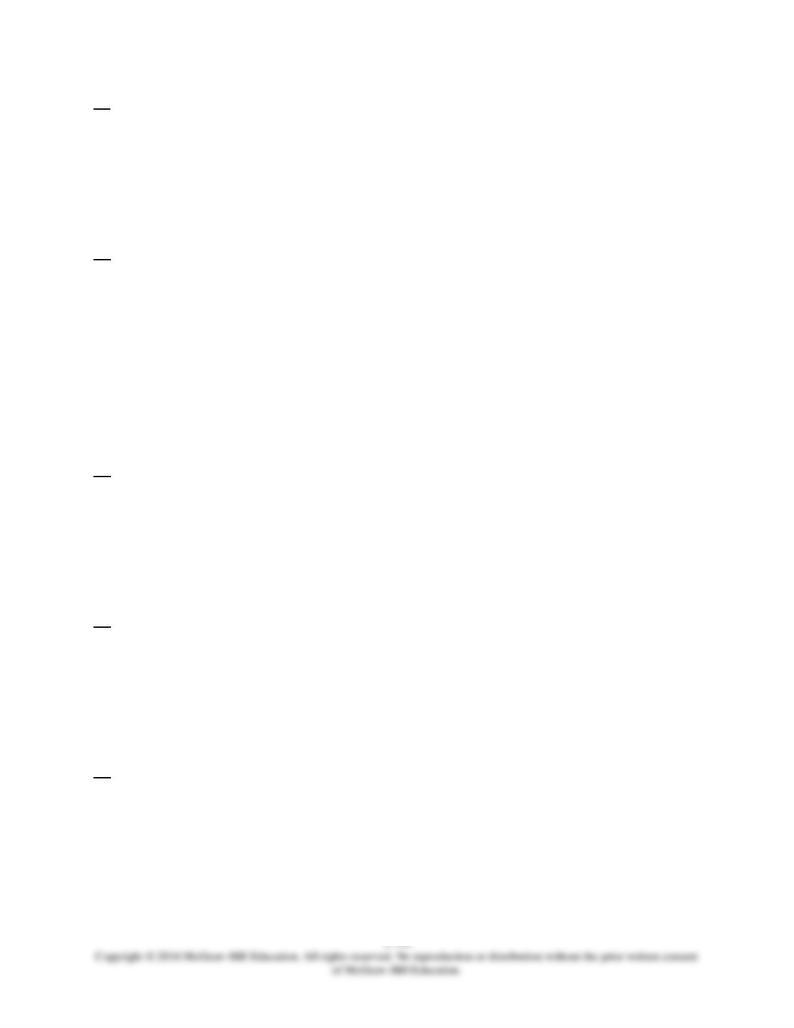
5-16
B. The cost of labor is relatively lower, causing the firm to use relatively more labor.
C. The firm's labor demand curve becomes less elastic, causing it to employ less labor.
D. The firm's labor demand curve becomes more inelastic, causing it to employ less labor.
AACSB: Reflective Thinking
Accessibility: Keyboard Navigation
Blooms: Remember
Difficulty: 1 Easy
Learning Objective: 05-04 Discusses the differences between short-run and long-run labor demand.
Topic: The Long-Run Demand for Labor
35. Compared to the long-run labor demand curve, the firm’s short-run curve is typically
A. less elastic.
B. the same.
C. more elastic.
D. more elastic only if labor and capital are gross complements. AACSB: Reflective Thinking
Accessibility: Keyboard Navigation
Blooms: Remember
Difficulty: 1 Easy
Learning Objective: 05-04 Discusses the differences between short-run and long-run labor demand.
Topic: The Long-Run Demand for Labor
36. The long-run labor demand curve incorporates
A. the substitution effect only.
B. the output effect only.
C. neither the substitution effect nor the output effect.
D. both the substitution effect and the output effect. AACSB: Reflective Thinking
Accessibility: Keyboard Navigation
Blooms: Remember
Difficulty: 1 Easy
Learning Objective: 05-04 Discusses the differences between short-run and long-run labor demand.
Topic: The Long-Run Demand for Labor
37. In the long run, the substitution effect of a lower wage
A. increases the quantity of labor demanded, while the output effect reduces it.
B. decreases the quantity of labor demanded, while the output effect increases it.
C. and the output effect both increase the quantity of labor demanded.
D. and the output effect both reduce the quantity of labor demanded. AACSB: Reflective Thinking
Accessibility: Keyboard Navigation
Blooms: Remember
Difficulty: 1 Easy
Learning Objective: 05-04 Discusses the differences between short-run and long-run labor demand.
Topic: The Long-Run Demand for Labor
38. The long-run response to a drop in the wage exceeds the short-run response for all of the following
reasons except
A. it is more difficult to substitute capital for labor in the long run than the short run.
B. an increase in labor makes capital more productive, leading to more capital and therefore higher labor
productivity.
C. the demand for the firm’s output is more elastic in the long run.
D. technology may change in the long run. AACSB: Reflective Thinking
Accessibility: Keyboard Navigation
Blooms: Remember
Difficulty: 1 Easy
Learning Objective: 05-04 Discusses the differences between short-run and long-run labor demand.
Topic: The Long-Run Demand for Labor
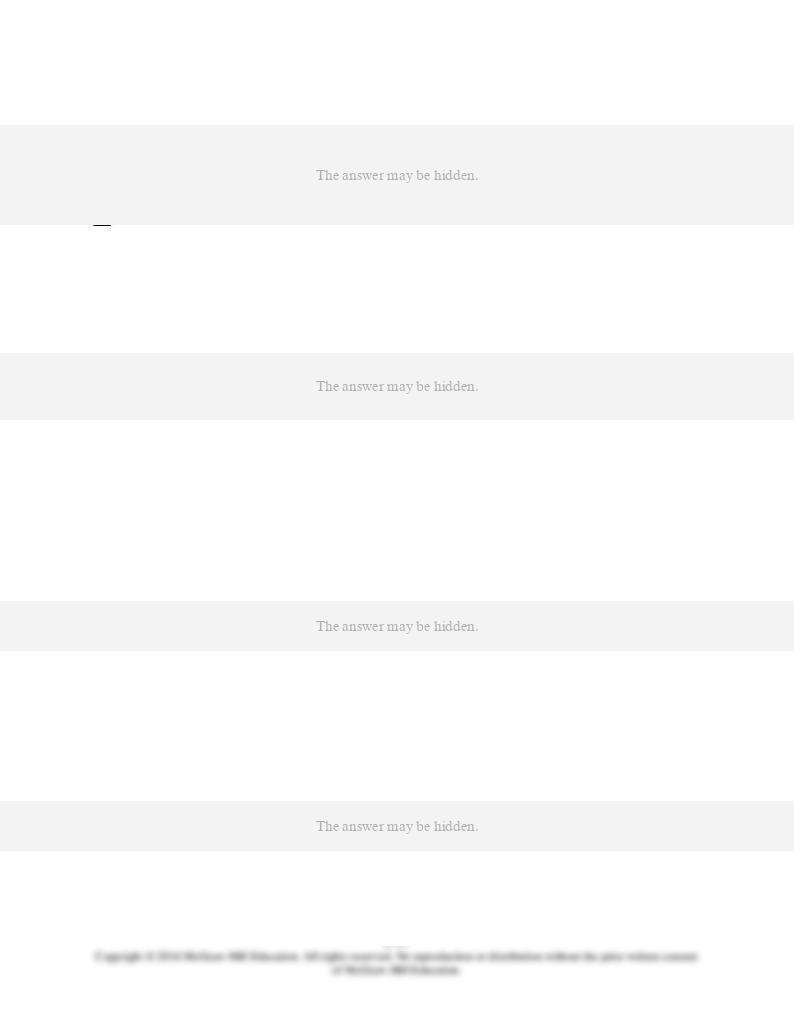
5-17
39. "To find the market demand curve for a particular type of labor, simply sum the labor demand curves
all firms taken collectively. AACSB: Reflective Thinking
Accessibility: Keyboard Navigation
Blooms: Understand
Difficulty: 2 Medium
Learning Objective: 05-05 Derive the market demand curve for labor from individual firm demands and explain why it is more inelastic than the
simple summation of the labor demand curves of all firms in the market.
Topic: The Market Demand for Labor
AACSB: Reflective Thinking
Accessibility: Keyboard Navigation
Blooms: Remember
Difficulty: 1 Easy
Learning Objective: 05-05 Derive the market demand curve for labor from individual firm demands and explain why it is more inelastic than the
simple summation of the labor demand curves of all firms in the market.
Topic: The Market Demand for Labor
41. The market wage increases from $9 to $11 and the firm responds by reducing its labor force by 16%.
The wage elasticity coefficient is
D. 1.6, indicating elastic demand. AACSB: Reflective Thinking
Accessibility: Keyboard Navigation
Blooms: Understand
Difficulty: 2 Medium
Learning Objective: 05-06 Identify and discuss the determinants of the elasticity of labor demand.
Topic: Elasticity of Labor Demand
42. Suppose that, as a result of a decrease in the market supply of labor, the wage rate has risen 10%.
After adjusting its employment level, a firm finds its total wage bill has decreased. This occurrence
D. was inelastic at the old wage, but is elastic at the new, higher wage. AACSB: Reflective Thinking
Accessibility: Keyboard Navigation
Blooms: Understand
Difficulty: 2 Medium
Learning Objective: 05-06 Identify and discuss the determinants of the elasticity of labor demand.
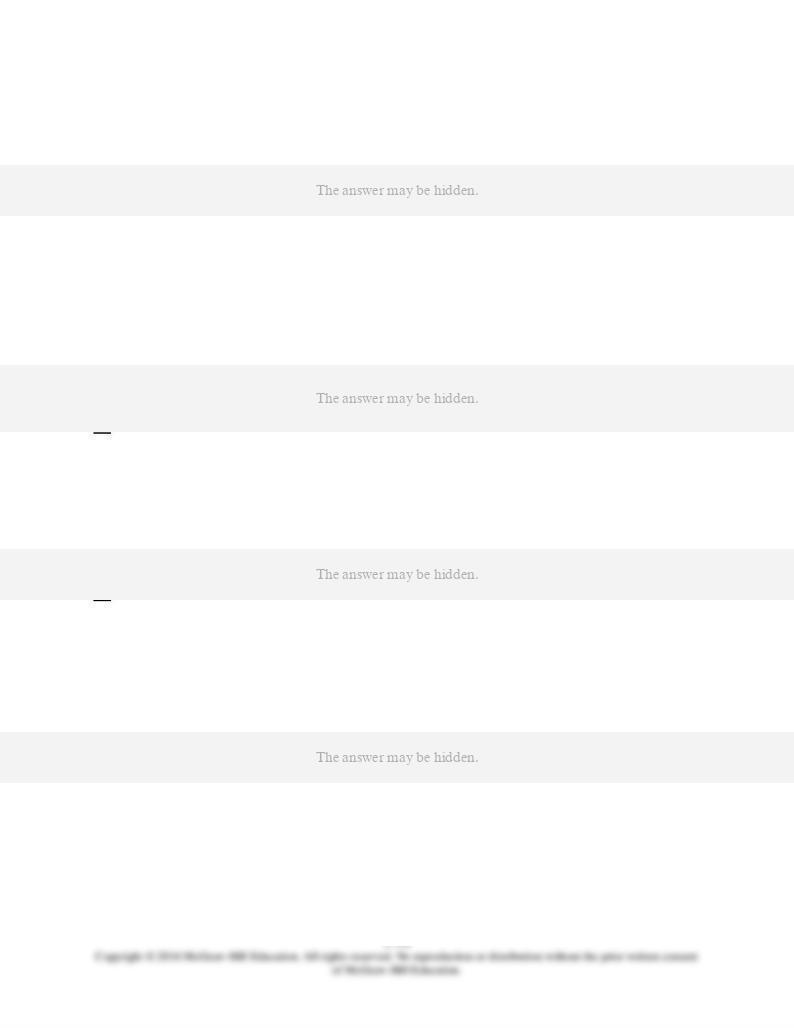
5-18
Topic: Elasticity of Labor Demand
43. Suppose that, as a result of an increase in the market supply of labor, the wage rate has fallen 10%.
After adjusting its employment levels, a firm finds its total wage bill has decreased. This occurrence
D. was inelastic at the old wage, but is elastic at the new, lower wage. AACSB: Reflective Thinking
Accessibility: Keyboard Navigation
Blooms: Understand
Difficulty: 2 Medium
Learning Objective: 05-06 Identify and discuss the determinants of the elasticity of labor demand.
Topic: Elasticity of Labor Demand
44. A union leader told its membership that a wage increase, while resulting in some layoffs, would
nonetheless increase the total incomes of its membership. The firm replied that a wage increase would
AACSB: Reflective Thinking
Accessibility: Keyboard Navigation
Blooms: Understand
Difficulty: 2 Medium
Learning Objective: 05-06 Identify and discuss the determinants of the elasticity of labor demand.
Topic: Elasticity of Labor Demand
45. In comparing two otherwise identical industries X and Y, an economist finds that labor demand is
D. Substitute resources have a less elastic supply in X than in Y. AACSB: Reflective Thinking
Accessibility: Keyboard Navigation
Blooms: Understand
Difficulty: 2 Medium
Learning Objective: 05-06 Identify and discuss the determinants of the elasticity of labor demand.
Topic: Elasticity of Labor Demand
46. In comparing two otherwise identical industries X and Y, an economist finds that labor demand is less
D. Substitute resources have a more elastic supply in X than in Y. AACSB: Reflective Thinking
Accessibility: Keyboard Navigation
Blooms: Understand
Difficulty: 2 Medium
Learning Objective: 05-06 Identify and discuss the determinants of the elasticity of labor demand.
Topic: Elasticity of Labor Demand
47. In his comparison of over 100 studies of labor demand, Hamermesh concludes the overall long-run
elasticity of labor demand in the United States to be
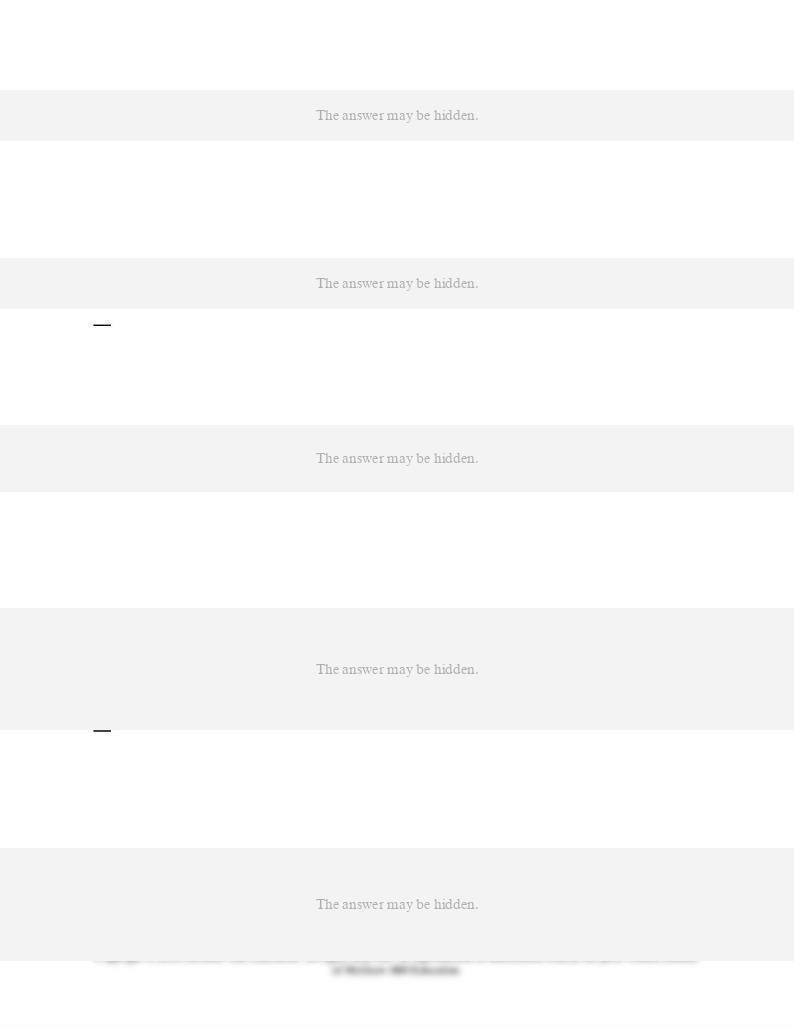
D. 1.4. AACSB: Reflective Thinking
Accessibility: Keyboard Navigation
Blooms: Remember
Difficulty: 1 Easy
Learning Objective: 05-06 Identify and discuss the determinants of the elasticity of labor demand.
Topic: Elasticity of Labor Demand
D. an increase in product demand AACSB: Reflective Thinking
Accessibility: Keyboard Navigation
Blooms: Remember
Difficulty: 1 Easy
Learning Objective: 05-07 Identify and explain the determinants of the demand for labor.
Topic: Determinants of Demand for Labor
AACSB: Reflective Thinking
Accessibility: Keyboard Navigation
Blooms: Remember
Difficulty: 1 Easy
Learning Objective: 05-07 Identify and explain the determinants of the demand for labor.
Topic: Determinants of Demand for Labor
50. Assume that skilled labor and energy are substitutes in production. An increase in energy prices is
AACSB: Reflective Thinking
Accessibility: Keyboard Navigation
Blooms: Understand
Difficulty: 2 Medium
Learning Objective: 05-07 Identify and explain the determinants of the demand for labor.
Topic: Determinants of Demand for Labor
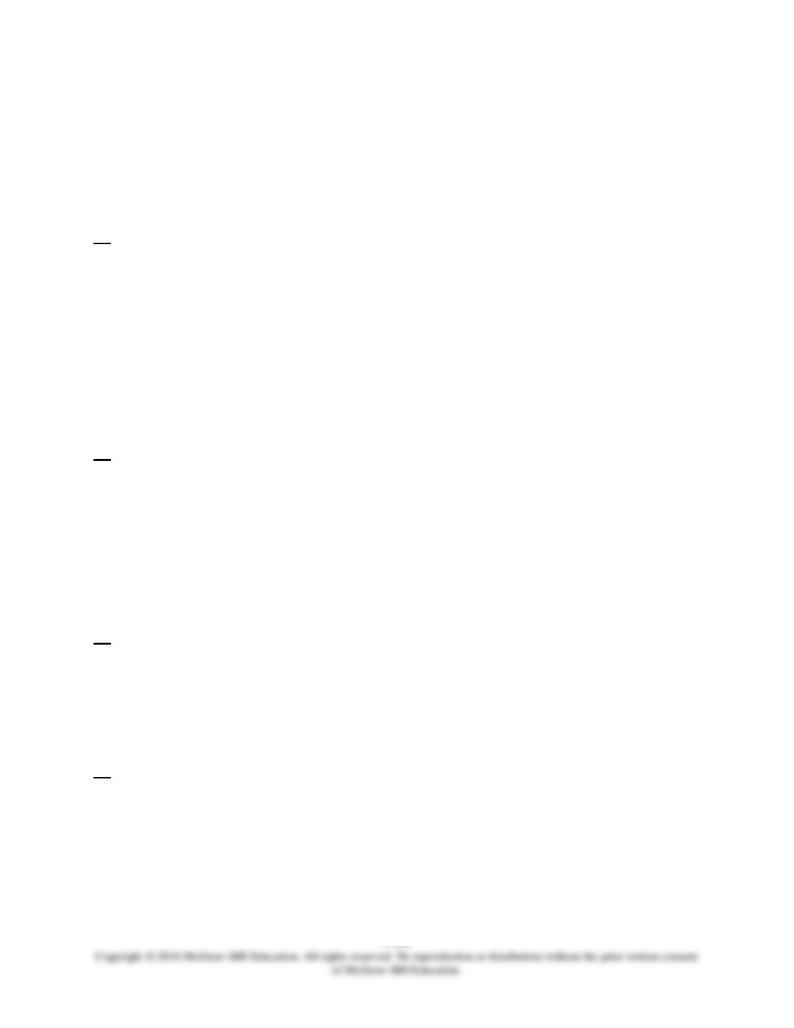
5-20
D. either increase or decrease the demand for unskilled labor, depending on the relative strengths of the
output effect and the substitution effect. AACSB: Reflective Thinking
Accessibility: Keyboard Navigation
Blooms: Remember
Difficulty: 1 Easy
Learning Objective: 05-07 Identify and explain the determinants of the demand for labor.
Topic: Determinants of Demand for Labor
52. Skilled labor will benefit from an increase in the wage rate paid to unskilled labor if
A. the substitution effect outweighs the output effect.
B. the output effect outweighs the substitution effect.
C. the output effect and substitution effect work in opposite directions.
D. skilled labor and unskilled labor are gross complements. AACSB: Reflective Thinking
Accessibility: Keyboard Navigation
Blooms: Remember
Difficulty: 1 Easy
Learning Objective: 05-07 Identify and explain the determinants of the demand for labor.
Topic: Determinants of Demand for Labor
53. In the textile industry, industrial robots and assembly line workers are gross substitutes. Accordingly,
the drop in the price of robots has
A. decreased the demand for robots.
B. increased the demand for assembly line workers.
C. decreased the demand for assembly line workers.
D. increased assembly line workers? wages. AACSB: Reflective Thinking
Accessibility: Keyboard Navigation
Blooms: Remember
Difficulty: 1 Easy
Learning Objective: 05-08 Relate the concepts of labor demand to real-world applications.
Topic: Real World Applications
54. Suppose that the decline in prices of personal computers has reduced the demand for labor at a
particular firm. We may conclude that at this firm
A. computers and labor are pure complements.
B. computers and labor are gross complements but not pure complements.
C. computers and labor are gross substitutes.
D. computers and labor are perfect substitutes. AACSB: Reflective Thinking
Accessibility: Keyboard Navigation
Blooms: Remember
Difficulty: 1 Easy
Learning Objective: 05-07 Identify and explain the determinants of the demand for labor.
Topic: Real World Applications
55. The contingent work force
A. has grown about 4 times as fast as the rest of the work force over the last two decades.
B. includes only temporary workers.
C. includes only workers who are involuntarily employed part-time.
D. has shrunk relative to the "core" labor force. AACSB: Reflective Thinking
Accessibility: Keyboard Navigation
Blooms: Remember
Difficulty: 1 Easy
Learning Objective: 05-07 Identify and explain the determinants of the demand for labor.
Topic: Real World Applications
56. Since 1980, the number of jobs in manufacturing has

5-21
A. increased, reversing a downward trend that had started in 1950.
B. decreased, reflecting in part the reduced productivity of manufacturing workers.
D. has no impact on labor demand at all. AACSB: Reflective Thinking
Accessibility: Keyboard Navigation
Blooms: Remember
Difficulty: 1 Easy
Learning Objective: 05-08 Relate the concepts of labor demand to real-world applications.
Topic: Determinants of Demand for Labor
58. In which occupations does the Bureau of Labor Statistics project the fastest employment growth over
D. health care and construction AACSB: Reflective Thinking
Accessibility: Keyboard Navigation
Blooms: Remember
Difficulty: 1 Easy
Learning Objective: 05-08 Relate the concepts of labor demand to real-world applications.
Topic: Determinants of Demand for Labor
59. An isoquant shows all combinations of
D. labor and capital that yield the same total output. AACSB: Reflective Thinking
Accessibility: Keyboard Navigation
Blooms: Remember
Difficulty: 1 Easy
Topic: Appendix - Isoquant Curves
60. At the least-cost combination of capital and labor,
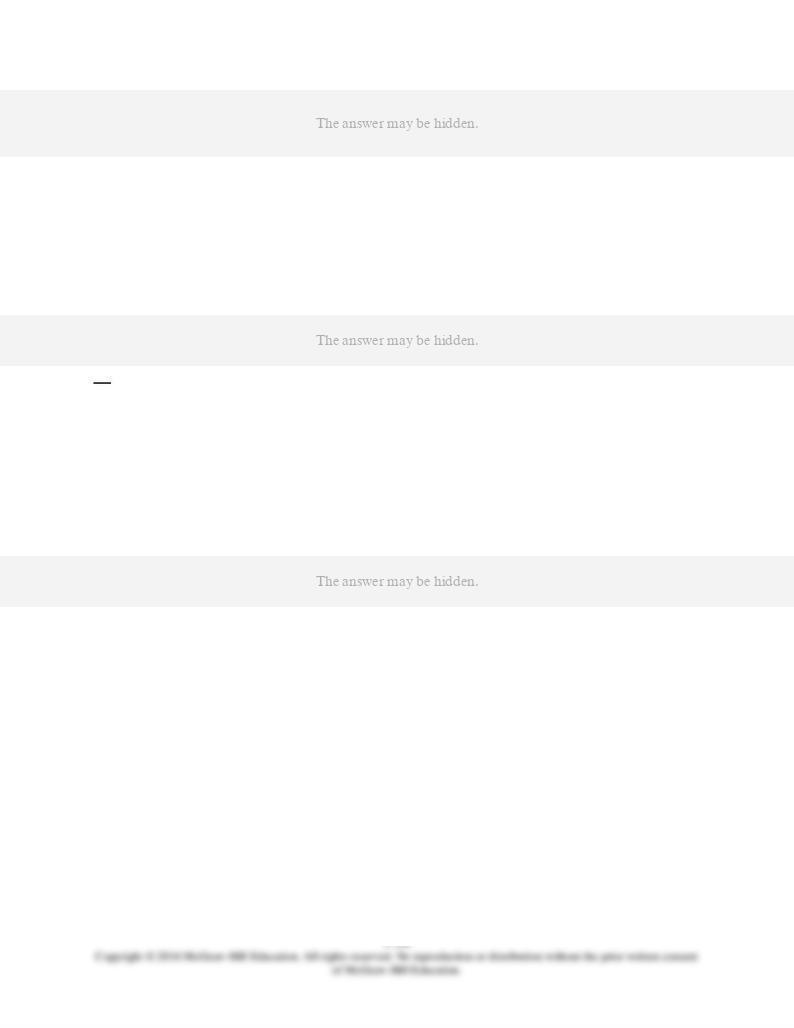
5-22
D. the isoquant cuts the isocost line at its lowest point. AACSB: Reflective Thinking
Accessibility: Keyboard Navigation
Blooms: Remember
Difficulty: 1 Easy
Topic: Appendix - Least-Cost Combination of Capital and Labor
61. The slope of an isoquant at any point reflects the
D. marginal rate of technical substitution. AACSB: Reflective Thinking
Accessibility: Keyboard Navigation
Blooms: Remember
Difficulty: 1 Easy
Topic: Appendix - Isoquant Curves
62. If the marginal rate of technical substitution of labor for capital is greater than the price of labor
relative to the price of capital, then the firm can produce the same level of output at lower total cost by
using
D. less capital and less labor. AACSB: Reflective Thinking
Accessibility: Keyboard Navigation
Blooms: Remember
Difficulty: 1 Easy
Topic: Appendix - Least-Cost Combination of Capital and Labor
63. Refer to the following graph.

5-23
If the two isoquants represent profit maximizing levels of output for two different wage rates, the move
from point A to point B represents the
D. substitution effect of an increase in the wage. AACSB: Reflective Thinking
Blooms: Remember
Difficulty: 3 Hard
Topic: Appendix - Deriving the Long-Run Labor Demand Curve
64. Refer to the following graph.

If the two isoquants represent profit maximizing levels of output for two different wage rates, the output
effect of a decrease in the wage rate is represented by the move from
D. C to A. AACSB: Reflective Thinking
Blooms: Remember
Difficulty: 3 Hard
Topic: Appendix - Deriving the Long-Run Labor Demand Curve
Chapter 05 Test Bank Summary
Category
# of Q
uestio
ns
AACSB: Analytic
12
AACSB: Reflective Thinking
52
Accessibility: Keyboard Navigation
44
Blooms: Apply
12
Blooms: Remember
38
Blooms: Understand
14
Difficulty: 1 Easy
36
Difficulty: 2 Medium
14
Difficulty: 3 Hard
14
Learning Objective: 05-02 Explain how a firm’s short-
run production function can be used to derive a demand curve for labor.
17
Learning Objective: 05-
03 Contrast the labor demand curves of firms that operate in perfectly competitive versus i
mperfectly competitive output markets.
13
Learning Objective: 05-04 Discusses the differences between short-run and long-
run labor demand.
8

Topic: A Firm's Short-Run Production Function
10